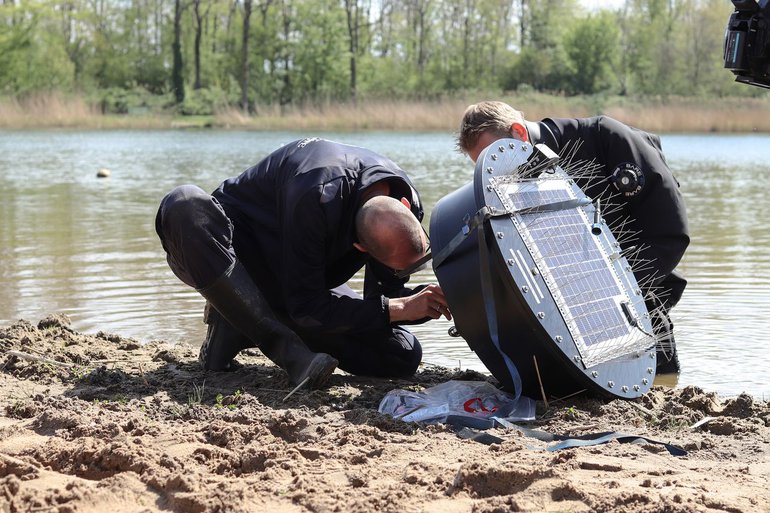During the 2022 swimming season, from May to September, measurements will be taken at Wylerbergmeer in Gelderland, near the German border. This is done using a measuring buoy in the water for blue-green algae and a weather station on land. Owner Leisurelands is passionate about the project and has made it available to researchers.
bluish green algae
Blue-green algae are microscopic organisms found worldwide in fresh water. Excessive growth of blue-green algae is a sign that the quality of the water and the nature that depends on it is not doing well. Some blue-green algae produce toxins that are dangerous to human and animal health.
Due to climate change, the temperature is rising, and hence the risk of disturbance from blue-green algae. If there is a lot of blue-green algae (with the so-called “blue-green algae”), it will not be possible to swim. People can develop stomach and intestinal pain. Blue-green algae can be more harmful to pets.
“Outbreaks of blue-green algae are increasing in number and size because of the abundance of nutrients in the environment,” says NIOO researcher and blue-green algae expert Diderme van de Waal. “Climate change is likely to further enhance this. At the same time, there is a greater need for cooling. With our knowledge, we as scientists want to contribute to solving societal challenges. And the project, which we have called Meerbericht, is a prime example of this.”
column predictions
In addition to the forecasted weather and annoying blue-green algae, the uncertainty in the forecast is also taken into account. As with “normal” weather forecasts, the uncertainty increases as the period over which the forecast extends increases. In weather reports, this uncertainty is often visualized through a “weather column”: a colored area around forecast temperatures. The greater the uncertainty, the wider the column. You will also find such compliments in the “More Report”.
“The uncertainty in the outlook for blue-green algae is what makes our project unique,” says Peter Sigmund of KNMI. “We make blue-green algae forecasts with a plume in the dashboard, where the water manager should be able to see how the flag is hanging at a single glance.” The instrument panel allows the water manager to better identify the nuisance hazards of blue-green algae and to monitor the water more effectively. This allows the swimming water to immediately open when it is safe to swim again. In this way, the water provides the cooling we need in a climate that is as warm as possible.
Willerberg Lake
For years, the Wylerbergmeer has been plagued by excessive amounts of blue-green algae, making swimming not always possible. Blue-green algae has been treated in various ways in recent years, but unfortunately without the desired result so far.
For Leisurelands, as the owner of the Wylerbergmeer, it is critical that this issue is resolved sustainably. “Ultimately, we naturally want no further disturbance from the blue-green algae of the Wylerbergmeer, and are happy to help science by providing our very own Wylerbergmeer,” says Kees Rutten of Leisurelands.
Text: Leisurelands en New Knao
Photos: Leisurelands

“Travel enthusiast. Alcohol lover. Friendly entrepreneur. Coffeeaholic. Award-winning writer.”


